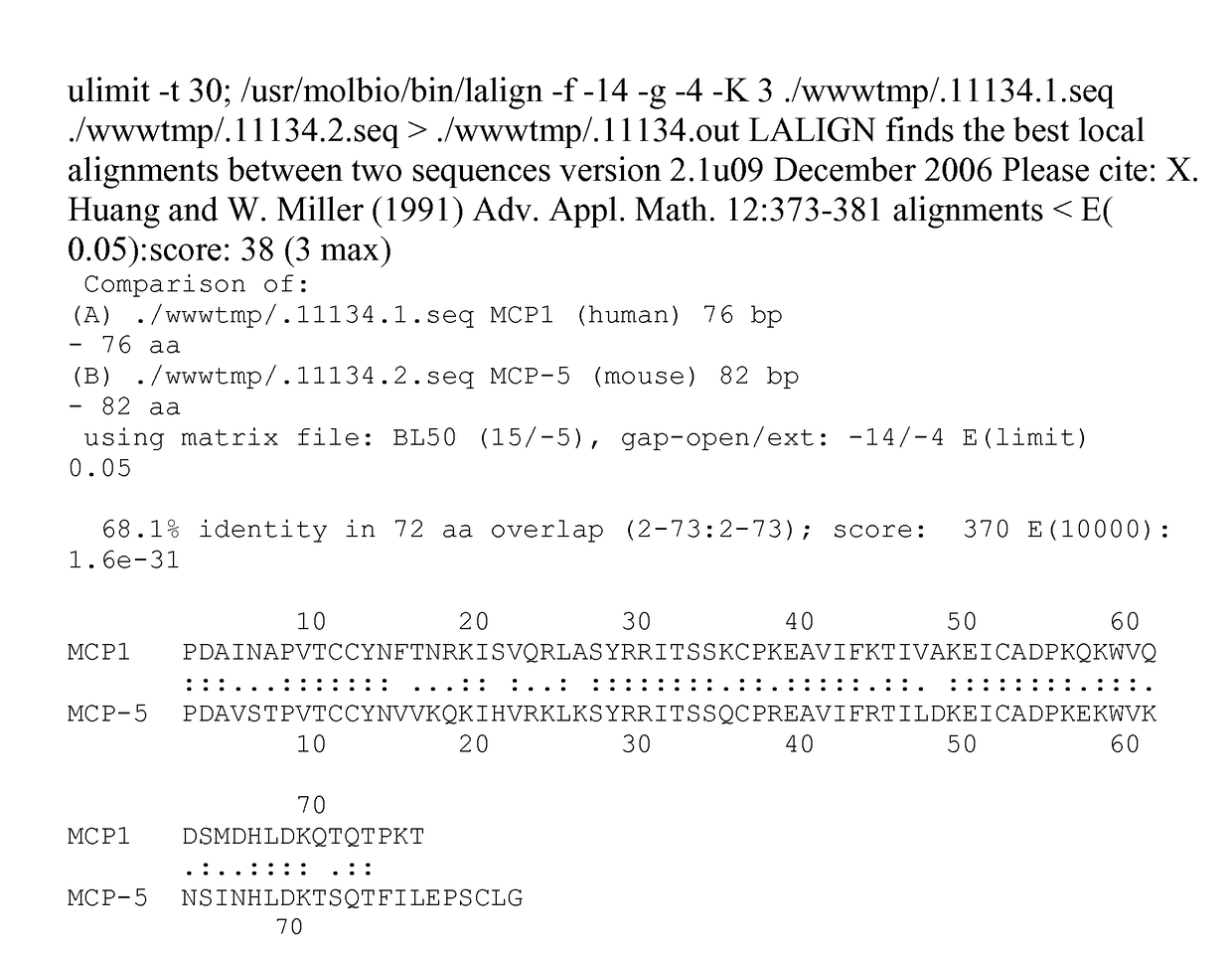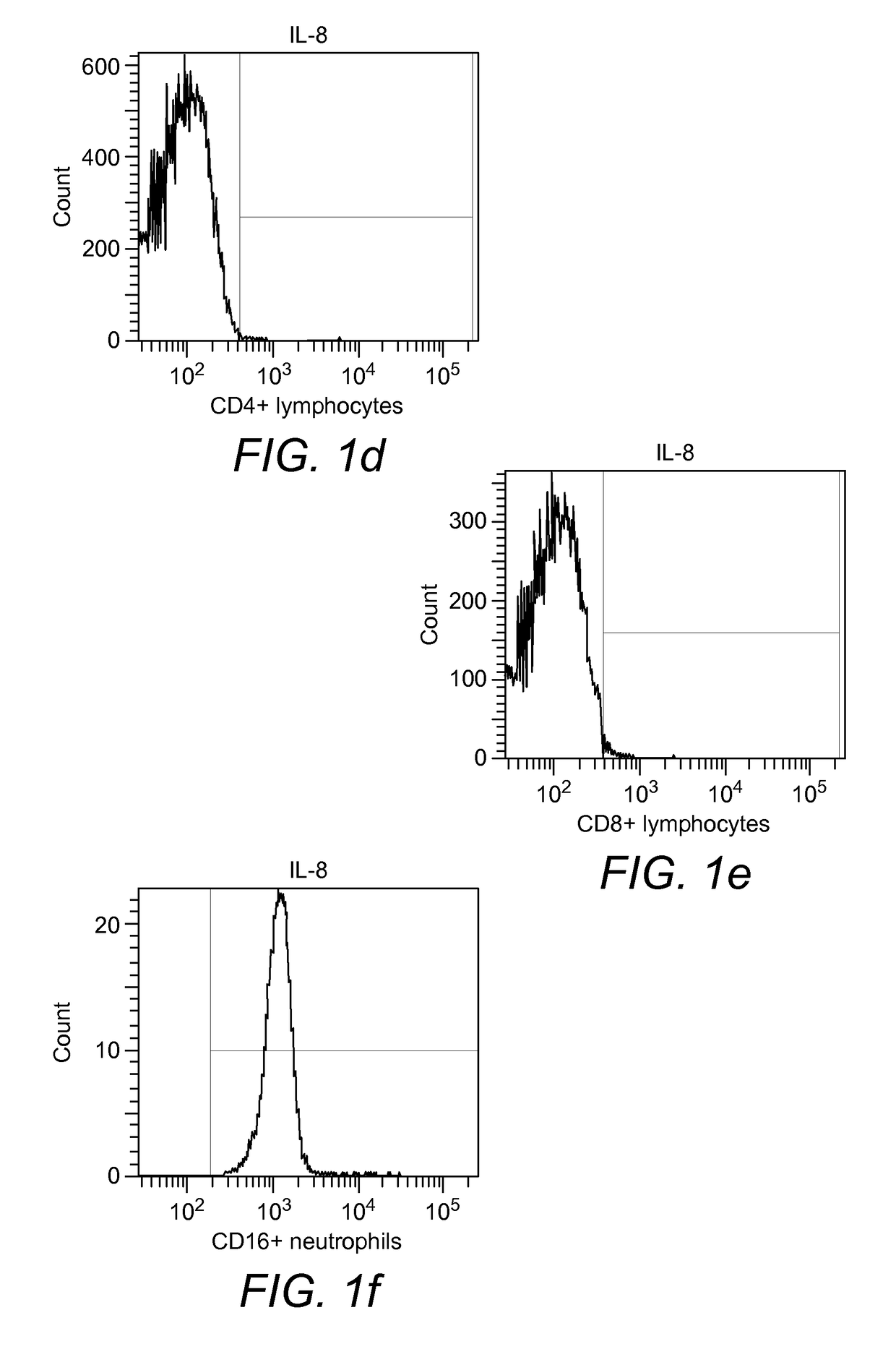Treating conditions associated with sepsis
a technology for sepsis and treatment, applied in the field of sepsis treatment conditions, can solve the problems of multiple organ failure and death, dysregulation of the coagulation system and associated collapse of blood vessels, wide-spread tissue and organ damage, etc., and achieve the effect of facilitating the retention of receptor binding properties and effective spacers
- Summary
- Abstract
- Description
- Claims
- Application Information
AI Technical Summary
Benefits of technology
Problems solved by technology
Method used
Image
Examples
example 1
[0202]Binding of monocytes to MCP-1. In the experiment with biotinylated MCP-1 it was found that about 90% of the monocytes obtained from peripheral blood of healthy donors had bound to the cytokine after 30 min of incubation (FIG. 1a), whereas CD4+ and CD8+ lymphocytes had not bound (FIGS. 1b and 1c).
example 2
[0203]Affinity of blood cells to biotinylated IL-8. In FIG. 1 the binding to biotinylated IL-8 (CXCL8) of CD4+ lymphocytes (FIG. 1d), CD8+ lymphocytes (FIG. 1e) and CD16+ neutrophils (FIG. 1f) obtained from healthy donors is shown. After 30 min of incubation all CD16+ neutrophils bound to IL-8. In contrast no binding was observed with CD4+ lymphocytes and CD8+ lymphocytes.
example 3
[0204]Monocytes were investigated for their expression of CCR2 (FIG. 2b) and their ability to bind MCP-1 (FIG. 2a). CCR2 expression was noted an all monocytes with the majority of monocytes expressing high levels, using an anti-CCR2 antibody (FIG. 2b). The MCP-1 binding to monocytes shown in FIG. 2a corresponds to the CCR2hi expressing population shown in FIG. 2b. Thus, MCP-1 binds favourably to CCR2hi expressing cells.
PUM
| Property | Measurement | Unit |
|---|---|---|
| diameter | aaaaa | aaaaa |
| diameter | aaaaa | aaaaa |
| flow rate | aaaaa | aaaaa |
Abstract
Description
Claims
Application Information
 Login to View More
Login to View More - R&D
- Intellectual Property
- Life Sciences
- Materials
- Tech Scout
- Unparalleled Data Quality
- Higher Quality Content
- 60% Fewer Hallucinations
Browse by: Latest US Patents, China's latest patents, Technical Efficacy Thesaurus, Application Domain, Technology Topic, Popular Technical Reports.
© 2025 PatSnap. All rights reserved.Legal|Privacy policy|Modern Slavery Act Transparency Statement|Sitemap|About US| Contact US: help@patsnap.com



